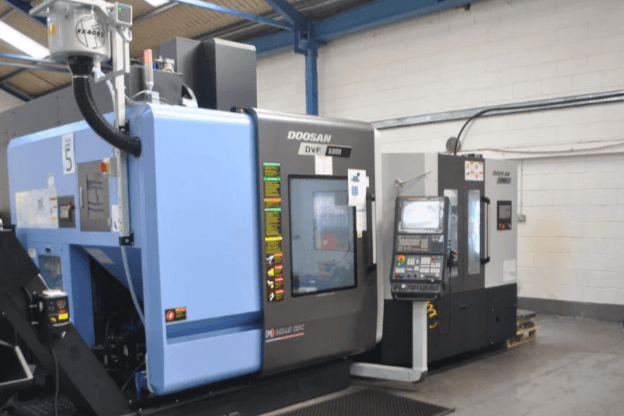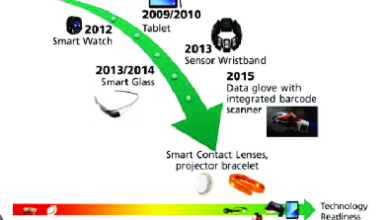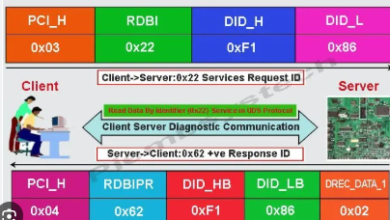What is a Vertical Machining Center?

Introduction
Vertical Machining Centers (VMCs) have revolutionized the manufacturing industry by offering a versatile and efficient approach to machining complex parts. These sophisticated machines are crucial in sectors where precision and reliability are paramount. In this article, we will explore the fundamentals of Vertical Machining Centers, their design, operation, and the benefits they bring to modern manufacturing.
What is a Vertical Machining Center?
A Vertical Machining Center is a type of CNC (Computer Numerical Control) machine that operates on a vertical axis. It is designed to perform various machining operations like milling, drilling, tapping, and boring. This machine features a vertically oriented spindle that approaches workpieces mounted on their table from above. The basic concept revolves around the vertical arrangement, which offers several benefits in handling and machining.
Design and Features of Vertical Machining Centers
The structural design of VMCs contributes significantly to their performance. Typically, these machines consist of a base, column, spindle, table, and control system. Each component is crafted to ensure rigidity and stability during high-speed machining. Core features often include high-speed spindles, automatic tool changers, and advanced CNC controls that enhance their capabilities and allow for precision machining of complex parts.
How Does a Vertical Machining Center Work?
Operation of a Vertical Machining Center begins with the setup, where the workpiece is securely fastened to the machine’s table. The machine then uses CNC programs to dictate the movement of the tools on three axes (X, Y, and Z). Automation and control systems play a critical role, enabling the VMC to perform precise cuts, drills, and other necessary operations without direct manual intervention, ensuring high precision and repeatability.
Types of Vertical Machining Centers
There are various types of Vertical Machining Centers available, each designed for specific needs and applications. Some are optimized for speed and light material loads, while others are built for heavy-duty cutting. Understanding the differences among these models helps in selecting the right machine for specific manufacturing tasks.
Applications of Vertical Machining Centers
VMCs are widely used across many industries, including automotive, aerospace, and electronics, where manufacturing precision components are critical. They are ideal for producing engine components, intricate molds, and complex brackets with high precision.
Advantages of Using a Vertical Machining Center
One of the primary advantages of using a Vertical Machining Center is its ability to produce precise and intricate parts consistently. The vertical orientation allows for easy chip removal and accessibility to the workpiece, enhancing the overall efficiency and speed of operations.
Challenges and Limitations
Despite their numerous benefits, VMCs face challenges such as limitations in processing very large or heavy materials due to their vertical construction. Additionally, the initial cost and maintenance can be high, affecting smaller operations.
Maintenance and Safety Guidelines
Proper maintenance is crucial for the longevity and optimal performance of VMCs. Routine checks and maintenance tasks such as lubrication, cleaning, and inspection of tool holders and spindles are necessary. Operators must adhere to strict safety protocols to prevent accidents and ensure safe operation.
Innovations in Vertical Machining Technology
Recent technological advancements in VMCs include enhanced CNC capabilities, improved automation, and the integration of IoT (Internet of Things), which allows for better monitoring and optimization of the machining process, leading to greater productivity and efficiency.
Choosing the Right Vertical Machining Center
When choosing a VMC, factors like machine capacity, spindle speed, tooling requirements, and automation capabilities should be considered. It’s also essential to evaluate the potential return on investment and operational costs to ensure cost-efficiency.
Case Studies
Several industries have seen significant improvements in production efficiency and product quality by integrating VMCs into their manufacturing lines. These case studies demonstrate the adaptability and effectiveness of Vertical Machining Centers in diverse manufacturing environments.
FAQs
- What materials can be processed by a Vertical Machining Center?
- VMCs can process a wide range of materials, including metals, plastics, and composites.
- How does a Vertical Machining Center differ from a Horizontal one?
- The main difference lies in the orientation of the spindle. VMCs have a vertical spindle which is suited for die sinking work, while horizontal machines are better for heavy cutting.
- What is the typical cost of a Vertical Machining Center?
- The cost can vary widely based on the size, features, and specific model, generally ranging from $50,000 to over $250,000.
- How to train operators for using a Vertical Machining Center?
- Operators should undergo comprehensive training covering CNC programming, machine operation, and safety protocols.
- What are the signs that a Vertical Machining Center needs maintenance?
- Signs include unusual noises, decreased accuracy, and longer machine cycle times.
Conclusion
Vertical Machining Centers are indispensable in modern manufacturing, providing the precision and efficiency required in today’s competitive market. With their robust design and advanced features, VMCs continue to evolve, pushing the boundaries of what is possible in machining operations.






